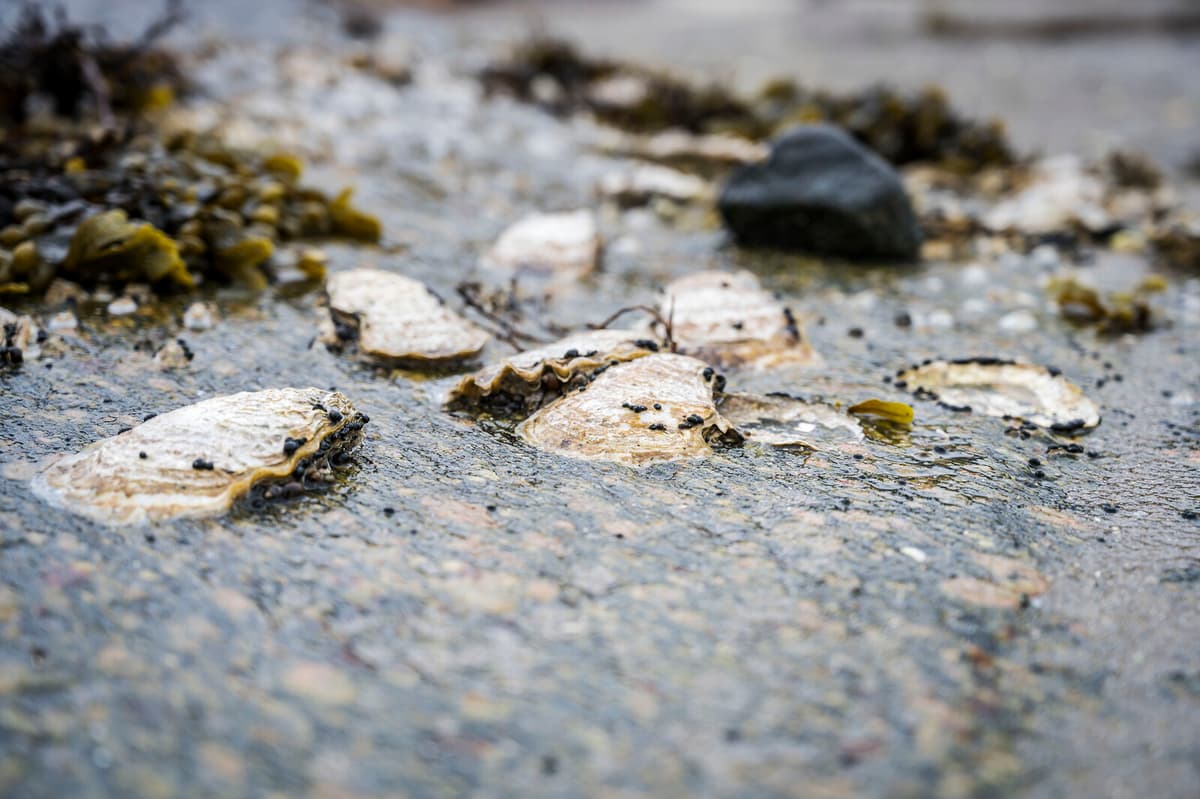Bathers get out of the seawater and it stings from the cuts on the feet. The razor-sharp Pacific oyster, also called the Japanese giant oyster, is an invasive species that is now found from Bohuslän and all the way down to the Skåne coast in Malmö.
In Bohuslän, the population is widespread, while it is about individual cases further south.
They have developed into one of the most common mussels we have on the west coast, says Professor Mats Lindegarth.
Grow on each other
In his research, he follows the species' progress along the Swedish coast, since it was discovered in 2006.
Exactly how the spread has occurred since then is difficult to say, the researcher means.
The mussel has probably spread with currents from Western Europe, where it was previously imported. Often, the mussels grow on each other, which can make the water inaccessible to people who want to bathe.
I would say that the spread went surprisingly fast. Today, they are found in principle everywhere between Strömstad and Gothenburg. If you go and look at a 100-meter stretch between the cities, you will definitely find them, says Lindegarth.
See spread risk
The Pacific oyster, which likes to settle in the water's edge and up to two meters down in the water, may appear in even more places in the future. In the research world, one sees a risk that the mussel will spread further into the Baltic Sea. So far, however, there are no documented discoveries in the brackish sea, according to Mats Lindegarth.
It is a concern that it will spread, but there is not much we can do about it, he says and adds:
Generally, you want to have as few new and alien species as possible, since it is difficult to predict the consequences. It may introduce diseases and have unwanted ecological effects.
The Pacific oyster is a type of mussel that was discovered for the first time in Sweden in 2006. Since then, they have become one of the most common mussels found along Sweden's west coast.
The species is found mainly in Västra Götaland and Bohuslän, but is also found in Halland and in The Sound. In the west, it is about established populations, while it is about individual cases further south.
Unlike sea squirts, which sit in the water's edge, the Pacific oyster can settle a few meters down in the water.
With their sharp edges, the mussel can cause cuts for people who bathe along the coast. If you get a cut, it is important to keep it clean, to reduce the risk of infections.
The Pacific oyster also contributes to positive effects for the environment, as they filter plankton and improve water quality.
Source: University of Gothenburg.





